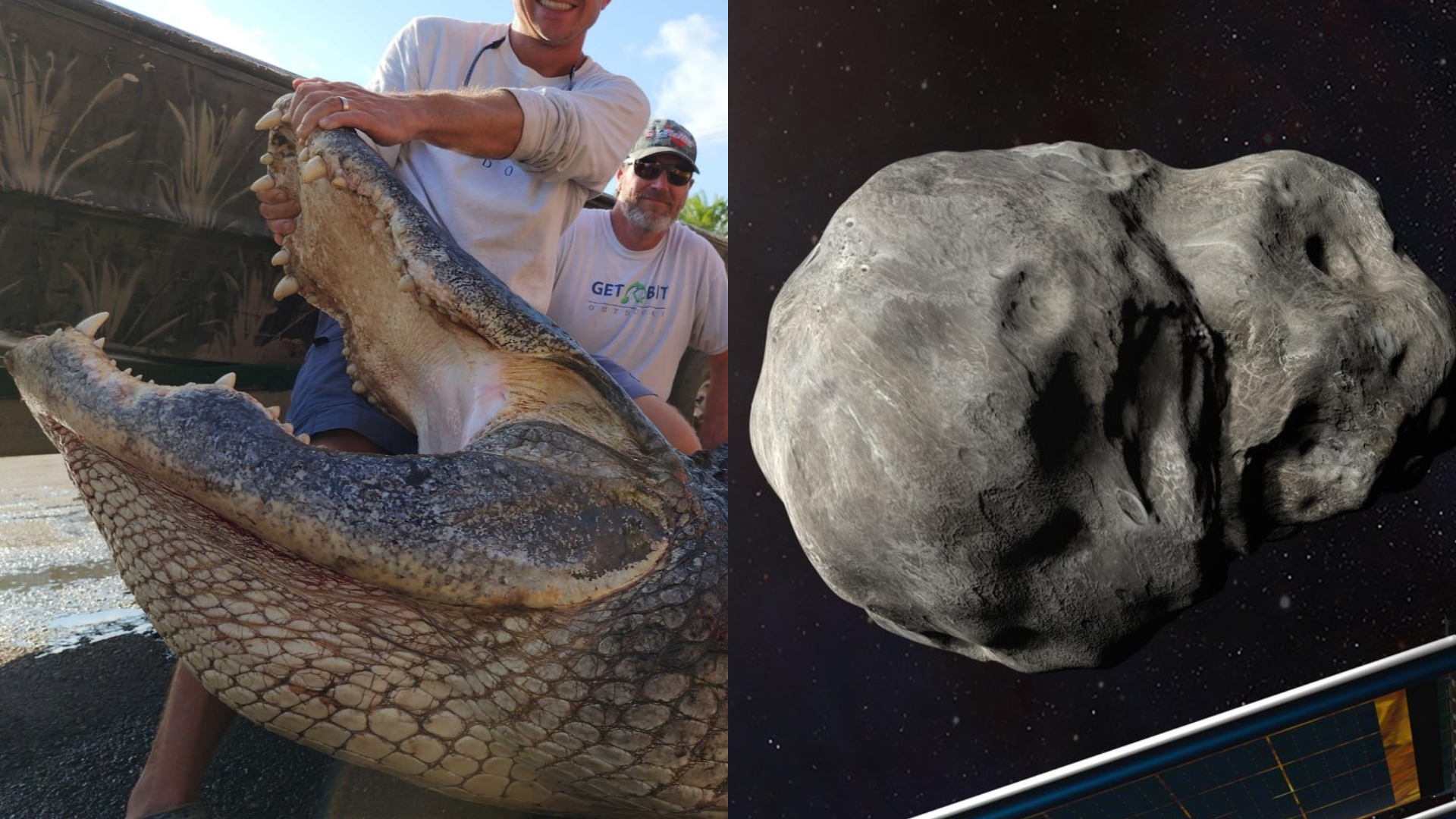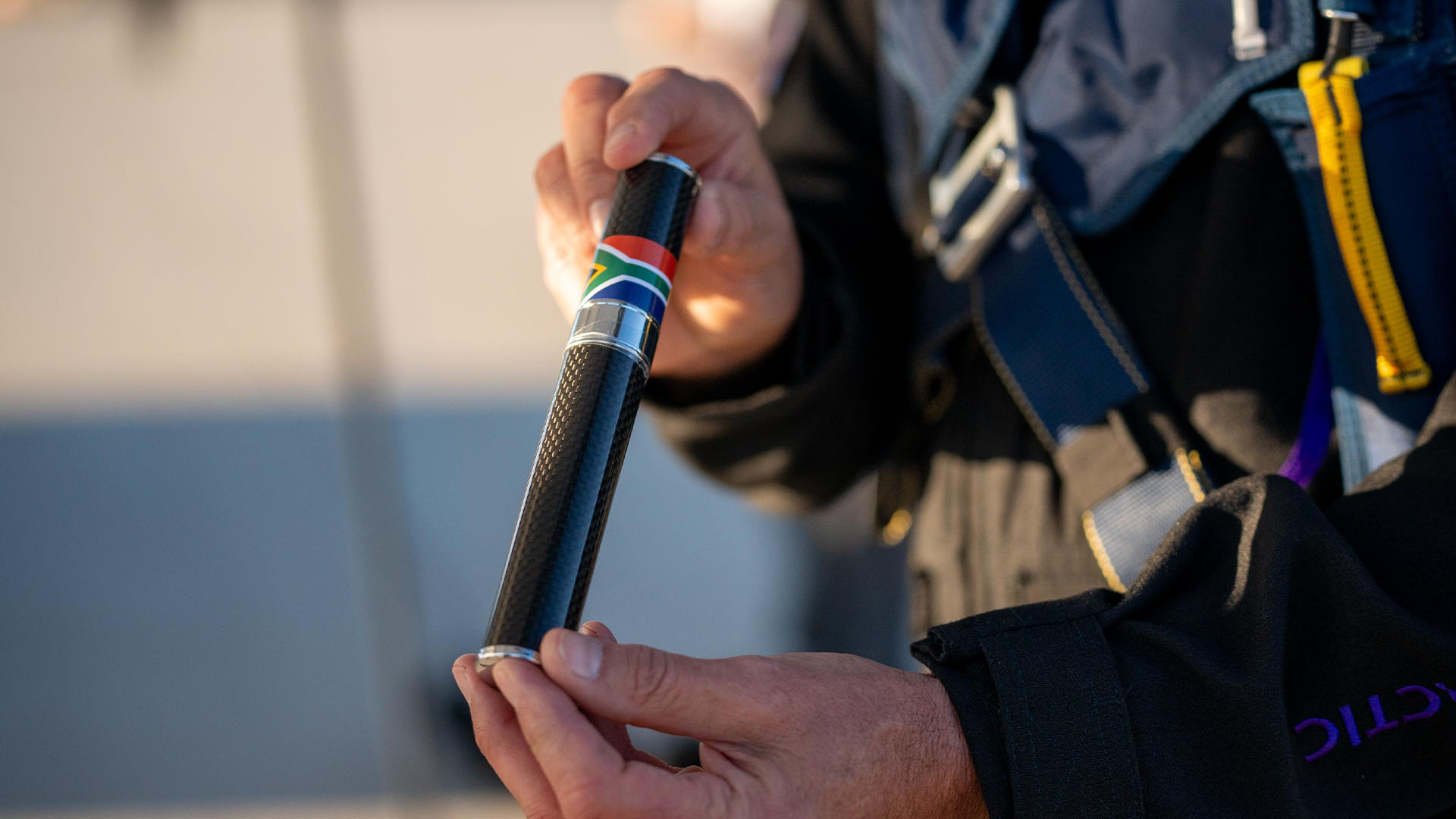Science news this week: A giant gator and a wobbly asteroid
Sept. 17, 2023: Our weekly roundup of the latest science in the news, as well as a few fascinating articles to keep you entertained over the weekend.

This week in science news we ponder why an asteroid is behaving in an unusual way, get to grips with a giant gator, and discover the mysterious bamboo that flowers only once a century.
In size at the very least, the biggest news story this week was that of the alligator weighing in at 920 pounds and measuring 30 feet in length. This behemoth was caught during Florida's annual statewide alligator harvest program, designed to help keep the population in check. On the other side of the size spectrum, we learnt of the tiny tortoise beetle larvae, which use their telescopic anuses to build shields from shed skin and poop. Delightful.
Looking toward space, observations from a California high school teacher and his students suggest that the asteroid Dimorphos, which NASA intentionally hit with a rocket during its DART mission in September 2022, is behaving in unpredicted ways, while the green comet Nishimura passed tantalizingly close to Earth. Astronomers also suggested an alien civilization with a telescope the size of the James Webb Space Telescope would be able to spot signs of life on Earth, before our very own JWST spotted potential signs of alien life across the galaxy from here in our solar system.
This is complete nonsense.
Rafael Bojalil-Parra, research reinforce
Of course, aliens on Earth have also caused a stir this week, with mysterious "alien" bodies unveiled before Mexico's congress drawing much derision from the scientific community, and NASA's first report on UFOs leaving many unanswered questions.
In health news, we learnt of a gene variant that may guard against Alzheimer's and Parkinson's, the common decongestant ingredient that doesn't work, and why nicotine vapes are one of the best tools to help people quit smoking. For those with an interest in embryology, there were two significant stories this week, with scientists growing human kidneys inside developing pig embryos for the first time, and the death of Ian Wilmut, the British embryologist who created Dolly the sheep clone.
From the world of archaeology, we discovered a 4,000-year-old Canaanite arch in Israel that may have been used by cult, a collection of 7,000-year-old animal bones and human remains from an enigmatic stone structure in Arabia, and learnt of the divers who recovered a U.S. airman's remains from WWII bomber wreck near Malta.
We finish this week's roundup of science news with the mysterious henon bamboo, which flowers only once every 120 years, and scientists have no idea why.
Sign up for the Live Science daily newsletter now
Get the world’s most fascinating discoveries delivered straight to your inbox.
Picture of the week

It may look fairly innocuous, like a cigar holder or a comically oversized pen, but it is the contents of this tube, or more specifically where they were taken, that is no laughing matter. On Sept. 8, fragmentary remains of two ancient human relatives, Australopithecus sediba and Homo naledi, were carried aboard a Virgin Galactic flight to the edge of space, leaving a fuming scientific community back on Earth behind them.
I am horrified that they were granted a permit. This is NOT science.
Sonia Zakrzewski, Bioarchaeologist, X (f
It's the first time fossilized remains of ancient human relatives have gone to the edge of outer space, having been approved a permit to go aboard the flight by the South African Heritage Resources Agency — find out why scientists are not happy about it.
Weekend reading
- Why do some people think cilantro tastes like soap?
- With Saturn currently perfectly positioned for observation with a small telescope, we look back at Voyager 2's landmark 1981 visit.
- What happens to cancer cells after they're killed by treatments?
- Scientists have calculated the average distance between stars, but there's much more to star distribution than meets the eye.
- Is it a fox? Is it a wolf? Actually, despite resembling both, this gorgeous canine from South America is neither.
- A new book looks at how one of the biggest events in Earth's history came to be: plants colonizing the continents. Read an excerpt here.
- Earth is the only rocky body in the inner solar system with strong magnetic poles. But where do they come from, and what do they do?
And finally...
This incredible footage shows guard dogs stopping a puma from hunting sheep in the pitch black Patagonian mountains. It is the first time this behavior has ever been filmed, and was captured using heat sensitive cameras and drones by a film crew working on the new National Geographic documentary series "Animals Up Close With Bertie Gregory," available to stream on Disney+.
But this wasn't some chance encounter. Find out why farmers are using dogs to protect their livestock from pumas, rather than hunting this protected predator.










